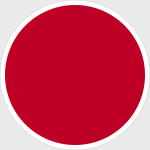Hobby Master HA2002 Imperial Japanese Navy Nakajima B5N2 "Kate" Torpedo Bomber - IJN Aircraft Carrier Hiryu, Third Attack Wave, Midway, June 3rd-4th, 1942 (1:72 Scale)
"I am the only one who must apologize to His Majesty."
- Japanese Admiral Isoroku Yamamoto, Commander-in-Chief of the Combined Fleet, at the conclusion to the Battle of Midway
 The Nakajima B5N (Allied reporting name: Kate) was the Imperial Japanese Navy's standard torpedo bomber for the first years of World War II. While the B5N was substantially faster and more capable than its Allied counterparts, the TBD Devastator and Fairey Swordfish, it was close to obsolescence by the time of the Pearl Harbor Attack. Nevertheless, the B5N operated throughout the whole war. Although primarily used as a carrier-based aircraft, it was also used as a land-based bomber on occasions. The B5N had a crew of 3: pilot, navigator/bombardier/observer, and radio operator/gunner.
The Nakajima B5N (Allied reporting name: Kate) was the Imperial Japanese Navy's standard torpedo bomber for the first years of World War II. While the B5N was substantially faster and more capable than its Allied counterparts, the TBD Devastator and Fairey Swordfish, it was close to obsolescence by the time of the Pearl Harbor Attack. Nevertheless, the B5N operated throughout the whole war. Although primarily used as a carrier-based aircraft, it was also used as a land-based bomber on occasions. The B5N had a crew of 3: pilot, navigator/bombardier/observer, and radio operator/gunner.
The B5N was designed by a team led by Katsuji Nakamura in response to a 1935 specification by the Navy for a torpedo bomber to replace the Yokosuka B4Y. Internally designated Type K by Nakajima, it successfully competed with the Mitsubishi B5M for a production contract. The first prototype flew in January 1937 and was ordered into production soon afterwards with the full designation Type 97 Carrier Attack Bomber.
The B5N soon saw combat, first in the Sino-Japanese War, where combat experience revealed several weaknesses in the original B5N1 production model. These were mainly concerned with the lack of protection that the design offered its crew and fuel tanks. Keen to maintain the high performance of the type, the Navy was reluctant to add weight in the form of armour, and instead looked to obtaining a faster version of the aircraft in the hopes of out-running enemy fighters. The B5N2 was given a much more powerful engine, and various modifications were made to streamline it. Although its performance was only marginally better, and its weaknesses remained unremedied, this version replaced the B5N1 in production and service from 1939. It was this version that would be used by the Navy in the attack on Pearl Harbor. Apart from this raid, the greatest successes of the B5N2 were the key roles they played in sinking the US Navy aircraft carriers Yorktown, Lexington and Hornet.
The B5N served as the basis for a follow-on design, the Nakajima B6N, which eventually replaced it in front-line service. The B5N continued to fly in secondary roles, such as training, target towing, and anti-submarine warfare. Some of the aircraft used for this latter purpose were equipped with early radars and magnetic anomaly detectors. B5Ns were also used as bombers during the unsuccessful defence of the Philippines in October 1944.
Pictured here is a 1:72 scale replica of an Imperial Japanese Navy Nakajima B5N2 "Kate" torpedo bomber that was embarked upon the Aircraft Carrier Hiryu, which participated in the third attack wave against Midway Island between June 3rd-4th, 1942.
Sold Out!
Dimensions:
Wingspan: 8-1/2-inches
Length: 5-3/4-inches
Release Date: July 2008
Historical Account: "Swan Song" - In May 1942, the Japanese aircraft carrier Hiryu sailed on her final mission. Her aircraft complement consisted of 21 Mitsubishi A6M "Zero" fighters, 21 Aichi D3A "Val" dive bombers, and 21 Nakajima B5N "Kate" torpedo bombers. On June 4th, 1942, she took part in the battle of Midway. At 4:30 AM she launched a strike against Midway Island, destroying planes and damaging installations. After Kaga, Soryu and Akagi were disabled by air attack at about 10:25 AM, Hiryu was the only operational carrier left to the Japanese. She launched two waves of planes at 10:50 and 12:45 against Yorktown, heavily damaging the American carrier with bombs and torpedoes (she was sunk later by I-168).
Japanese search planes had located the remaining American aircraft carriers, and all surviving aircraft from the Carrier Striking Force had landed on Hiryű and were refueled and armed; but while preparing to launch a third strike against them, Hiryu was attacked at 5:03 PM by 13 SBD Dauntless dive bombers from Enterprise. She was hit by four 1000 lb (453.6 kg) bombs, three on the forward flight deck and one on or near the forward elevator. The explosions started fires among the aircraft on the hangar deck.
Although Hiryu's propulsion wasn't affected, the fires could not be brought under control. At 9:23 PM her engines stopped, and at 1:58 AM a major explosion rocked the ship. The order to abandon ship was given shortly afterwards and the survivors were taken off by the destroyers Kazagumo and Makigumo. Rear Admiral Tamon Yamaguchi and Captain Kaku remained on board as Hiryu was scuttled at 5:10 AM by torpedoes from Makigumo. She sank at 9:12 AM, taking 35 men down with her (another 350 or so had been killed by the bombs, fires and explosions). Thirty-five were rescued by the US Navy and taken prisoner. Admiral Yamaguchi's insistence on going down with his carrier robbed the Japanese of one of their most experienced and brilliant carrier admirals, while Admiral Fletcher, who abandoned the doomed Yorktown in the same battle, later became one of the primary architects of Allied victory in the Pacific.





![Star Trek Jem'Hadar Battle Cruiser [With Collector Magazine]](http://cdn4.volusion.store/qh9e9-jdqv9/v/vspfiles/photos/EMST0013-1.jpg?v-cache=1740197136)
